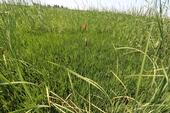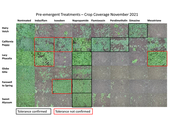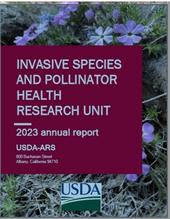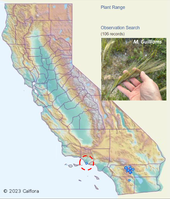- (Public Value) UCANR: Protecting California's natural resources
- Author: Deniz Inci
- Author: Kassim Al-Khatib
- Posted by: Samson Romano

Loyant® CA Section 2(ee) Recommendation Bulletin for Control of Cattail in Rice
A recommendation bulletin has been released for florpyrauxifen-benzyl (Loyant® CA, Corteva Agriscience LLC, Indianapolis, IN, USA) to control cattail plants in California rice fields and permitted under FIFRA Section 2(ee). Cattail (Typha latifolia L.) also known as common cattail or broadleaf cattail is a perennial wetland weed that naturally occurs widely in nearly all North America and are often considered undesirable, weedy, or invasive. Common cattail is cosmopolitan weed that can grow up to 10-ft tall under favorable conditions. Common cattail has recently been more problematic in the drill-seeded rice...
- Author: Ryan Hill
- Author: Marcelo Moretti

Introduction:
Pollinator insects are essential to produce many economically and nutritionally important crops grown in the western USA. These crops include blueberries, almonds, sunflowers, cucurbits, and many others. Almond pollination in California plays a vital role in the apiary industry, driving beekeepers to haul huge numbers of bee colonies to California for the few weeks in late winter when almonds bloom. Bees are selective of the pollen and nectar they forage, and diverse floral resources can allow bees to forage according to their nutritional needs (Leponiemi et al. 2023). Planting pollinator habitat in natural areas, gardens, and agricultural land is one method of supporting bee health....
- Author: Bradley Hanson

The USDA Agricultural Research Service's Invasive Species and Pollinator Health research unit recently shared their annual activities report. There are several interesting updates on biological control of weeds and management of aquatic invasive weeds that are highly relevant to California weed managers and land management folks.
The full report is attached at the bottom of this post, but here are a few of the topics that grabbed my attention and might be of interest to the readers of this blog:
- Invasiveness of yellow flag iris (Iris pseudacorus L.) with climate change
- Biological control of yellow...
- Author: Justin Valliere

Keep an eye out for this potential problem weed in southern California: Stipa capensis. First reported in 1995 in Riverside, this species is native to the Mediterranean and has established in the Coachella Valley of the Sonoran Desert. It is spreading rapidly in the Palm Springs area, forming dense monocultures. Confirmed reports have recently been made in Borrego Springs and Point Mugu. It has the potential to promote fire in California desert ecosystems and may also suppress native wildflower abundance in the areas it invades.
How to spot...
- Author: Christopher J Mcdonald
Roadsides are often a very difficult place to control weeds. Weeds thrive on roadsides and roadsides and rights of way are obviously long and narrow. Weeds along the edge of the shoulder need to be cleared to reduce fuels to prevent wildfires, and to ensure safety for drivers and also so that weeds do not damage the road surface or shoulder structure.
Herbicide applications on roadsides are often conducted at large scales where several acres to many acres are treated in a day. Roadside equipment can also be highly specialized ensuring large stretches of public roads and adjacent lands are better protected.
Herbicide applications on roadsides should be calibrated to ensure the amount of herbicide applied is the amount...


